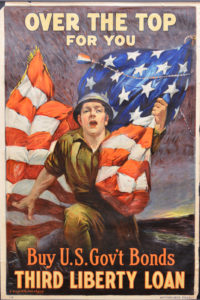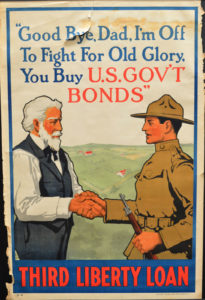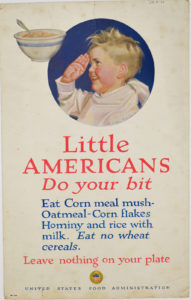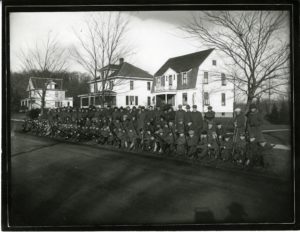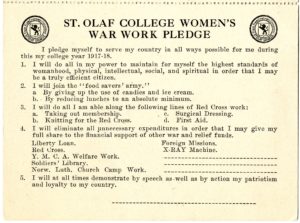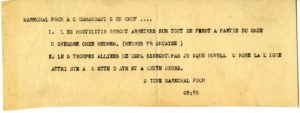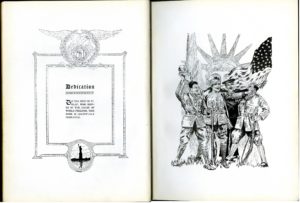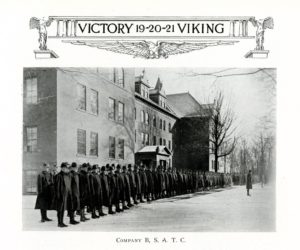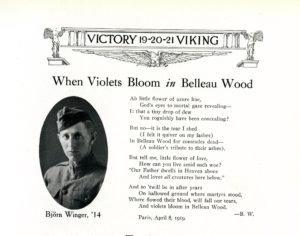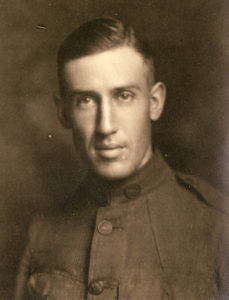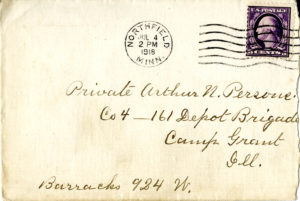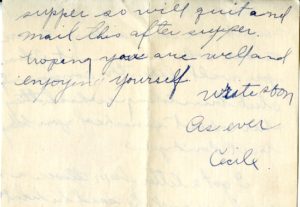If you think that Friday the 13th is an unlucky date, you are not alone. 99 years ago, Northfield resident Homer Mason agreed with you in principle, but his experiences during World War I made him begin to think that perhaps Friday the 13th was not such a bad thing, after all.

Homer Mason in uniform, 1918. See the full portrait on the Collaborative.
Homer served in the Signal Corps in Tours, France, south of Paris during the fall of 1918. As a radio operator, he was well aware of news from the front as well as from home. In two of his letters, he makes reference to the unluckiness of Friday the 13th, but considering what happened, he said, “I’ll never be skeptical about Friday 13ths after this.”
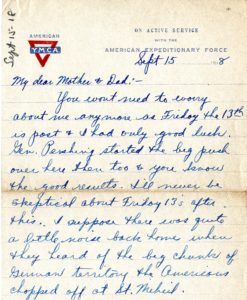
Excerpt of a letter from Homer Mason to his parents, September 15, 1918. See the full letter on the Collaborative.
In this letter, Homer discusses the Saint-Mihiel offensive of September 12-16, 1918. It was the first independent offensive led by the American Expeditionary Force under General John J. Pershing. In effect, the Americans regained control of a section of France that had been occupied by Germany since 1914. This success – and perhaps the luckiness of Friday the 13th – led to a great increase in confidence on the part of the Americans and their allies.
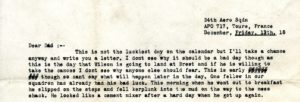
Excerpt of a letter from Homer Mason to his father, December 13, 1918. See the full letter on the Collaborative.
Later that year, after the Germans had signed the armistice but before the peace treaty was signed, Homer noted another occurrence on Friday the 13th of December. This time, he mentions the fact that President Wilson was willing to take the risk of landing in France to begin the peace negotiations on this traditionally unlucky date. While the treaty negotiations were more or less a success (at least for the winners of the war), Wilson’s other plan for a League of Nations – a multi-national organization devoted to peace in the world – failed. Perhaps he should have landed in France on another day?




